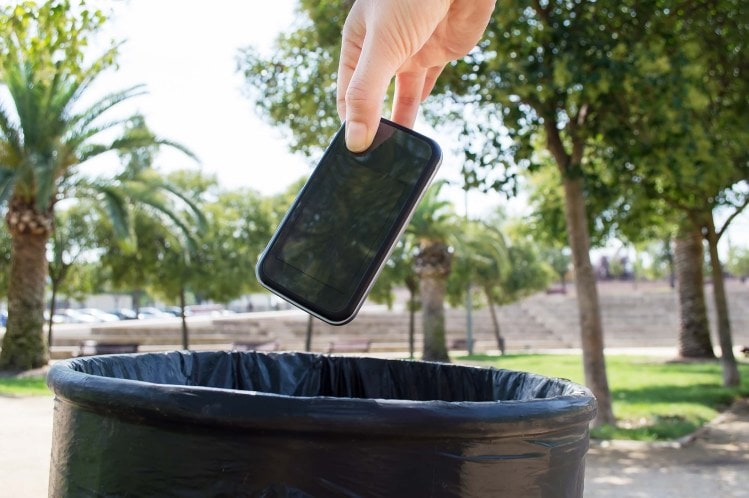The climate crisis is one of those everyone will have to make in coming decades to massive, so-called “wicked” problems that can seem overwhelming when we think about it too much. That sense of powerlessness can make us feel as if we can’t do anything – what can we as individuals do, after all, in the face of an existential crisis? It’s enough to make us throw up our hands and do nothing.
A new global movement aims to change that feeling of powerlessness by setting us concrete challenges we can take to make the world better. The Jump is a grassroots UK-based campaign that has come up with six actions or “shifts” ordinary people can take for one, three or six months.
The shifts are based on a recent research report, The Future of Urban Consumption in a 1.5°C World, which identified the most important changes we must take to prevent ecological collapse. And in fact, the authors say that these are also the changes ensure we keep global warming to safer levels.
The Jump’s founders say: “Our society is hooked on stuff and it’s destroying our planet, often without even making our lives better. Another way is possible! Our goal is a world of less stuff and more joy, where humanity is in balance with nature – through helping achieve a two-thirds reduction in the impact of consumption in rich countries by 2030. Science shows this is what’s needed and that citizens can actually have a huge role in making it happen.”The science behind The Jump makes it clear that, yes, government and business do bear most responsibility for this deep shift, but citizens and communities have power too. The billions of people living in relative comfort can have an impact by making six shifts by 2030.
The Jump challenges us to “make the jump” and try one shift, or try them all – you might find new habits forming that you can build on over time.
Travel light

The long-term aim:
Get rid of private vehicles.
Action:
Avoid using your private vehicle and use public transport. Most of us have become accustomed to owning a car, and sometimes more than one. Car ownership levels have been growing globally and are expected to double again by 2040, leading to a huge climate problem. If you are thinking of buying a car, see if you can hold off and find alternatives that can get you where you need to go. If you’re feeling brave, get rid of the car you have, or see if you can join a car-sharing scheme to share the benefit (and the emissions)!
Why?
Globally, transport is responsible for about a quarter of overall greenhouse gas emissions, and more than two-thirds of this comes from the engines of road vehicles. The increasing use of private vehicles also causes congestion, noise pollution and air pollution, which is one of the main global health risks humans are facing.
There have been improvements in the fuel efficiency of traditional cars, but rather than reducing emissions, this has just enabled us to travel more for the same cost, and purchase bigger, heavier vehicles.
How?
Ride a bicycle or walk. (This includes scooting, rollerblading, or whatever else is your preferred choice of active transport.) Many of the journeys we take are for short distances that don’t require a car. In New Zealand, nearly a third of our car journeys are less than 2km, according to the government’s Gen Less website – which would take 25 minutes to walk or less than 10 minutes to cycle – without breaking a sweat! If your distance is longer or very hilly, consider an e-bike or e-scooter. If you have lots of things (or small people) to carry, you could consider a cargo bike.
Use public transport. Depending on where you live, taking the train or bus usually doesn’t take much longer than driving, and can actually be far quicker when you factor in congestion and parking. You can also work, read or relax on the way and turn up fresh. If you do need to have a car, try to keep it for a long time rather than swapping it out for a new model (and when you do swap it, choose electric). Cars can last more than 20 years – and the shell and interior of a car can last even longer if well cared for. But if you replace it with a new one every three years you’re generating five or six times the amount of emissions involved in making these cars over that period.
Make it last

The long-term goal:
Keep electronics for seven years to avoid the environmental costs of manufacturing new ones.
Action:
Keep hold of the phone you have and avoid buying new electronic products. Some of us have a smartphone and a personal computer, and in some cases these are supplemented by a tablet, e-reader, smartwatch and other electronic items. We typically replace these products for an upgraded model at least every couple of years. The target is to keep electronic products for five to seven years – their full optimum lifetime. This applies to other belongings too. This will mean repairing rather than replacing, and not succumbing to advertisements that make you think you need the next new thing now!
Why?
The process of extracting rare earth metals and producing huge volumes of products generates a significant amount of emissions – often more than the emissions associated with the energy demand of using the product itself. For example, only 13 percent of the Apple iPhone 11 Pro’s lifetime emissions is actually to do with its use; the other 86 percent is associated with its production, transport and end-of-life processing.
How?
Next time you’re thinking of getting a new phone or other item, pause to think whether you really need one. Instead, try to repair products, borrow them, rent them or buy them second-hand. If you really need something, then keep new items to a minimum.
Eat green
Action:
Move to a plant-based diet. Eat everything you buy. Eat healthy portions. Our current eating habits are not sustainable. There are changes we can make that will dramatically reduce emissions from the food we eat.
Why?
Changing our behaviours around food is the most impactful of all the shifts. And an added bonus is that we can save money!
More than 25 percent of total global emissions arise from the food system. And it’s not just about climate change. Biodiversity loss, land use change, fertilisers in the ocean that create dead zones and the massive extinction and loss of insects due to pesticides are all problems driven by food production.
Evidence shows animal-based foods are major sources of greenhouse gas emissions. And levels of food waste globally are huge – around a third of food produced is wasted. Some of this happens in the supply chain but household food waste is a big issue – every time we throw food away, it’s not just the emissions associated with the management and disposal of the waste that have been squandered, but also the energy and resources that went into producing that food.
How?
Move to a mostly plant-based diet. This means replacing most of the meat and dairy we eat with plant-based alternatives, which local research has shown are lower in emissions. You don’t need to eliminate all animal foods from your diet, but cutting back will be great for you and the planet. Eat everything you buy. Avoid throwing food away. If we stop wasting food, we can avoid wasting the resources and emissions associated with producing that food and getting it on your plate. Eat healthy amounts. Avoid eating excessively. The “healthy amount” of food is different for each person, body type and level of physical activity, so find what feels right for you.
Dress retro

Action:
Try to avoid buying any new clothes. Every item of clothing we buy has emissions associated with it. Reducing the amount we buy can help reduce these emissions. The Jump has set a target of three new items of clothing per person per year. If you’re doing The Jump for one to three months, try not to buy anything new at all. If you’re taking the six-month challenge, try to restrict yourself to just one new piece.
Why?
The clothing and textiles industry now accounts for more greenhouse gas emissions than international aviation and shipping combined. Fast fashion means we are buying and replacing clothing more frequently than ever before.
Lower prices often mean poorer-quality clothes that don’t last as long, and these low prices have also resulted from unseen human and environmental costs, such as river pollution, poor working conditions, low wages and the exploitation of workers.
When we dispose of clothes, we might donate them to a charity or second-hand shop. However, supply can outstrip demand. Some donated clothing may be exported through textile merchants to be sold to people in developing countries, which can disrupt local economies and livelihoods. Clothes that are thrown away or are not suitable for reuse or recycling mostly end up in landfill or incinerators.
How?
Before buying new clothes, consider what is already in your wardrobe. Are there any items that with a bit of alteration could fit the bill? Try alternatives. Think about the reason you’re buying new clothes. Is it because you want a style update? Why not try upcycling, clothes swaps or checking out second-hand/charity shops first? Is it because something doesn’t quite fit any more? Think about whether alterations could help, and investigate local tailors or craftspeople. When you do buy new items, look for quality and durability. Quality clothes might be more expensive, but consider the cost per wear. If it lasts three times as long, it’ll be a financial saving over the lifetime of the item and better for the environment.
Change the system
Action:
Make at least one life shift to change the system. Big improvements to global infrastructure and economic and financial systems are needed; this is the job of governments and big business.
The research behind The Jump outlines crucial changes needed to ensure that we can achieve zero carbon, replace fossil fuels with renewable energy, improve energy efficiency of buildings and industry, invest in green technology, shift heating and transport to electricity, and decarbonise our supply chains.
Other crucial work shows that moving towards an alternative economic system will create a more distributive and regenerative economy, resulting in an ecologically safe and socially just society.
Why?
This shift is different from the others because the research doesn’t imply that individuals are responsible for changing global systems. However, we know that personal shifts to our own lives can collectively have a massive impact.
How?
While taking The Jump, we can make at least one change in our own lives to help transform the system. Some of these options may not be possible for you, so it’s about embracing what is within your capability.
Some ideas:
- Change to a green energy supplier.
- Change your KiwiSaver to a green fund.
- Use ethical and green banks.
- Use your energy at home efficiently, or install energy efficiency measures.
- If you feel comfortable about it and are able to, consider pushing for change through activism or peaceful protest. For example, write to your political representative outlining the changes you want to see.
Holiday local

Action:
Avoid booking any new flights. The science supports keeping short-haul flights (less than 1500km return) to once every three years. A long-haul return flight is sustainable once every eight years depending on how far you’re flying. We can still see the world, but perhaps we need to think about taking trips less often and staying longer, and when we’re overseas using public transport, where possible.
Why?
Aviation currently contributes around two percent of overall global emissions. This figure is increasing more than any other form of transport.
The adoption of alternative sustainable aviation fuels or new technologies such as electric planes will still be necessary, but limiting flight demand makes this transition easier. It reduces competition with food production, given that biomass-based fuels are likely to be the primary alternative to conventional jet fuel.
How?
Choose local holiday destinations. As we’ve learned during the pandemic, we don’t have to travel across the world to find beauty, fun or relaxation. Take a road, train or ferry trip. There are multiple alternatives to flying, and these journeys can be more comfortable, more enjoyable and more relaxing, and allow you to enjoy your surroundings while you travel. Use video calling for meetings or to catch up with friends rather than flying to meet people face-to-face.
Want to know more? See takethejump.org.








